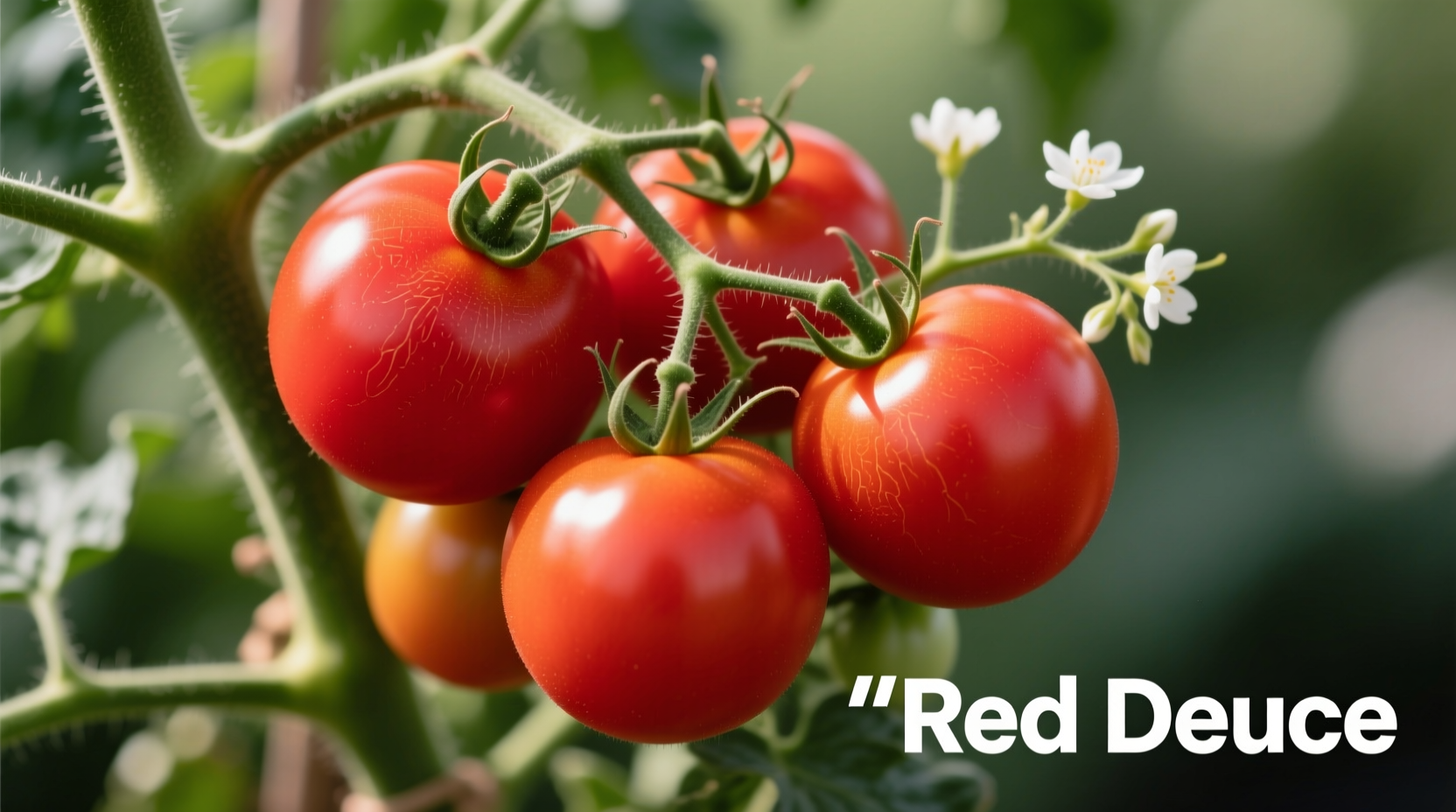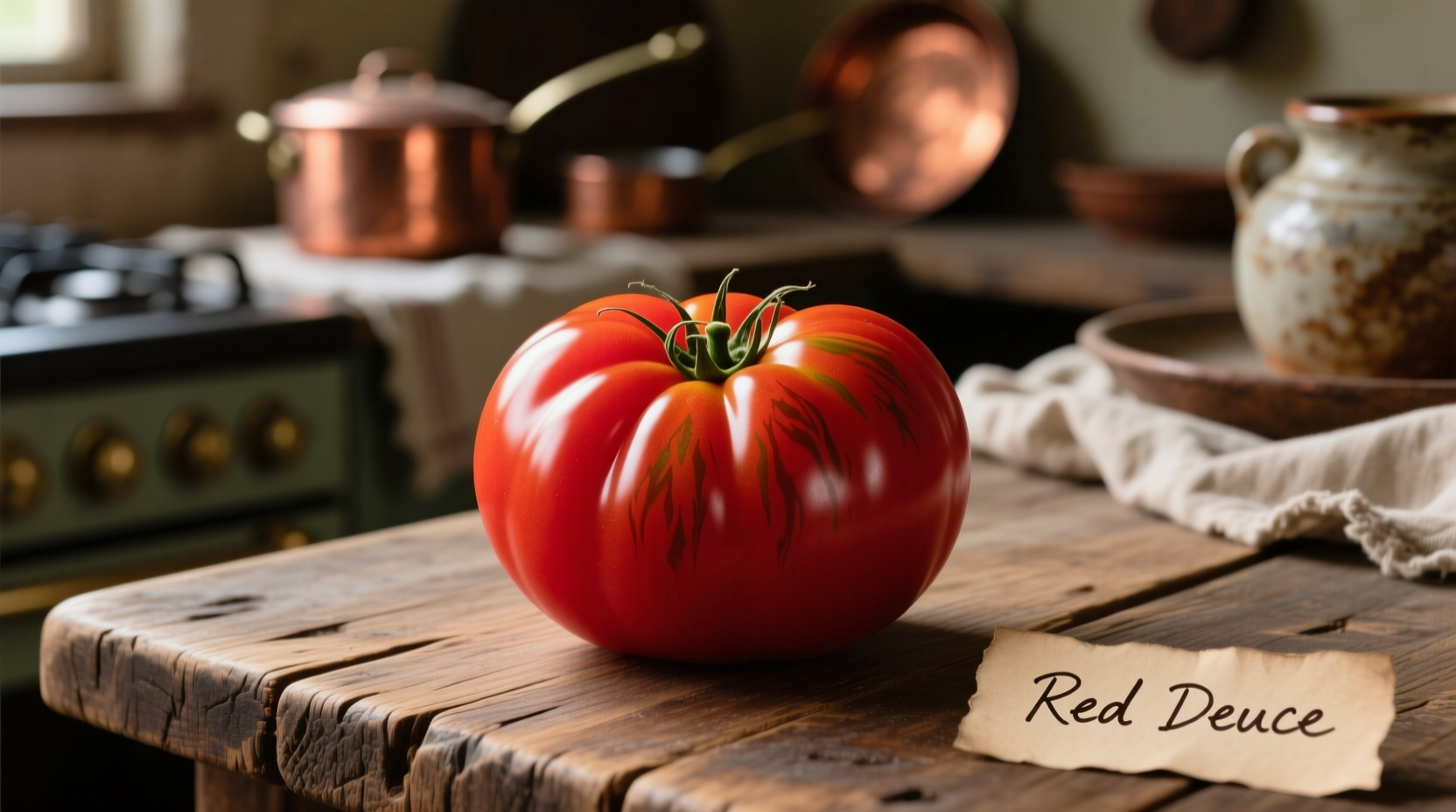The Red Deuce tomato is a disease-resistant hybrid variety known for its consistent production of medium-sized (6-8 oz), deep red fruits with excellent crack resistance. Developed specifically for home gardeners and small-scale growers, this determinate bush-type tomato matures in approximately 70 days and offers reliable yields even in challenging growing conditions.
Discover everything you need to know about cultivating and using this exceptional tomato variety that's become a favorite among gardeners seeking reliable production without compromising on flavor. Whether you're a beginner gardener or an experienced grower, understanding the unique characteristics of Red Deuce tomatoes can transform your gardening success.
What Exactly Is the Red Deuce Tomato Variety?
Bred specifically for disease resistance and consistent production, the Red Deuce tomato (Solanum lycopersicum 'Red Deuce') represents a significant advancement in home garden tomato varieties. This hybrid cultivar was developed through careful cross-breeding to combine desirable traits from multiple parent plants, resulting in a variety that performs exceptionally well across diverse growing conditions.
Unlike heirloom varieties that maintain consistent genetics through generations, Red Deuce is a first-generation hybrid (F1), meaning it's created by crossing two distinct parent lines. This hybrid vigor gives Red Deuce its notable disease resistance and reliable fruit production. The variety received its official designation and became commercially available to home gardeners around 2015 after extensive field testing by agricultural researchers.
Key Characteristics That Set Red Deuce Apart
Red Deuce tomatoes deliver a balanced flavor profile that combines moderate acidity with natural sweetness, making them versatile for both fresh eating and cooking applications. The fruits typically reach 6-8 ounces each with a classic round shape and smooth, deep red skin that resists cracking—a common problem with many other tomato varieties during fluctuating moisture conditions.
| Characteristic | Red Deuce | Compared to Average Varieties |
|---|---|---|
| Maturity | 70 days | 10-14 days earlier than many heirlooms |
| Plant Type | Determinate (bush) | More compact than indeterminate varieties |
| Disease Resistance | Fusarium wilt (races 1-2), Verticillium wilt, Tomato Spotted Wilt Virus | Superior to most heirloom varieties |
| Fruit Size | 6-8 oz | Medium, ideal for slicing |
| Crack Resistance | Excellent | Significantly better than most varieties |
Optimal Growing Conditions for Maximum Yield
Red Deuce tomatoes thrive in full sun conditions with at least 6-8 hours of direct sunlight daily. Unlike many tomato varieties that struggle in container environments, Red Deuce adapts well to container gardening when provided with a minimum 5-gallon container and proper support. The determinate growth habit means these plants reach a predictable height of 3-4 feet, making them ideal for gardeners with limited space.
For best results, plant Red Deuce seedlings after the last frost when soil temperatures consistently reach 60°F (15.5°C) or higher. Space plants 24-36 inches apart in rows 3-4 feet apart to ensure adequate air circulation, which helps prevent fungal diseases. Incorporate compost or well-rotted manure into your planting holes to provide essential nutrients for strong root development.
Consistent watering is crucial for Red Deuce tomatoes—aim for 1-2 inches of water per week, applied at the base of the plant to keep foliage dry. Mulching around plants helps maintain consistent soil moisture and temperature while reducing weed competition. Unlike many tomato varieties that require extensive pruning, Red Deuce's determinate habit means minimal pruning is needed beyond removing any diseased or damaged foliage.
Harvesting and Storage Best Practices
Red Deuce tomatoes typically begin ripening approximately 70 days after transplanting. The fruits develop a uniform deep red color when fully mature, though you can harvest them at the "breaker stage" (when first red color appears) and allow them to ripen indoors if needed. Unlike many varieties that suffer flavor loss when picked early, Red Deuce maintains excellent flavor development even when harvested slightly early.
For optimal flavor, harvest tomatoes in the morning when sugars are most concentrated. Gently twist fruits from the vine, leaving the calyx (green stem cap) attached to extend shelf life. Store harvested tomatoes at room temperature away from direct sunlight for up to 5-7 days. Never refrigerate tomatoes unless they're fully ripe and you need to slow further ripening, as cold temperatures degrade flavor compounds and texture.

Culinary Applications That Showcase Red Deuce's Strengths
The balanced flavor profile and firm texture of Red Deuce tomatoes make them exceptionally versatile in the kitchen. Their moderate acidity and natural sweetness shine in fresh applications like caprese salads, sandwiches, and bruschetta, where the tomatoes' structural integrity holds up well without becoming mushy.
For cooked applications, Red Deuce performs admirably in sauces and salsas due to its consistent texture and rich color. Unlike some varieties that break down too quickly, Red Deuce maintains its shape during gentle cooking while still releasing sufficient liquid for sauce development. The tomatoes' natural sweetness reduces the need for added sugar in sauces, making them ideal for gardeners seeking more natural flavor profiles.
Home canners particularly appreciate Red Deuce's consistent size and shape, which allows for uniform packing in jars. The variety's excellent disease resistance also means fewer issues with blossom end rot—a common problem that can compromise canning quality in other varieties.
Common Challenges and How to Address Them
While Red Deuce offers superior disease resistance compared to many varieties, gardeners should still monitor for common tomato pests like aphids, whiteflies, and tomato hornworms. The variety's determinate growth habit means it completes its fruit production within a concentrated period (typically 3-4 weeks), so proper timing of pest control measures is essential.
One notable advantage of Red Deuce is its exceptional resistance to cracking during irregular watering patterns—a significant benefit for gardeners in regions with unpredictable rainfall. However, like all tomatoes, it still requires consistent moisture for optimal fruit development. During periods of heavy rain, the thick skin helps prevent splitting that commonly affects other varieties.
Gardeners in cooler climates should note that while Red Deuce performs well across USDA zones 3-9, it may benefit from season extension techniques like black plastic mulch or fabric row covers in northern regions to maximize heat absorption and accelerate ripening.
Why Red Deuce Excels for Container and Small Space Gardening
The compact growth habit of Red Deuce makes it particularly well-suited for container gardening, balcony gardens, and other space-limited environments. Unlike sprawling indeterminate varieties that require substantial vertical space, Red Deuce's bush habit stays manageable with minimal support—typically just a small cage or single stake.
Container gardeners report excellent results with Red Deuce when using quality potting mix and ensuring adequate drainage. The variety's disease resistance proves especially valuable in container settings, where soil-borne pathogens can accumulate more quickly than in garden beds. For best container results, use pots with a minimum 5-gallon capacity and refresh the soil annually to maintain optimal nutrient levels.











 浙公网安备
33010002000092号
浙公网安备
33010002000092号 浙B2-20120091-4
浙B2-20120091-4